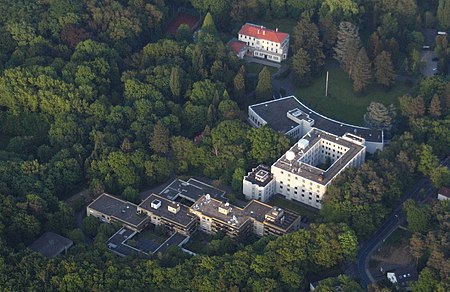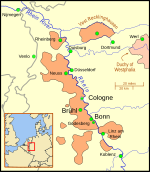Russian Consulate School in Bonn

The Russian Consulate School in Bonn (full official name: Secondary School with extended foreign language teaching of the General Consulate of Russia in Bonn, Russian: Средняя общеобразовательная школа с углубленным изучением иностранного языка Генерального консульства России в Бонне) is one of two Russian state-owned international schools in Germany along with the Russian Embassy School in Berlin. The school was established in 1981 as a primary school of the Soviet embassy in West Germany. In 1986, the school was reorganized into a combined primary secondary school for children of the staff of the Soviet embassy in Bonn, the Soviet trade representation in Cologne, and the embassies of socialist Czechoslovakia, Bulgaria and Mongolia.After the dissolution of the USSR, the school was transferred to the newly established Embassy of Russia in Germany along with other former Soviet diplomatic property. After the relocation of the embassy from Bonn to Berlin, the school became part of the Russian consulate in Bonn which remained in the former Soviet and Russian embassy compound.
Excerpt from the Wikipedia article Russian Consulate School in Bonn (License: CC BY-SA 3.0, Authors, Images).Russian Consulate School in Bonn
Waldstraße, Bonn Bad Godesberg
Geographical coordinates (GPS) Address Nearby Places Show on map
Geographical coordinates (GPS)
| Latitude | Longitude |
|---|---|
| N 50.685222 ° | E 7.132397 ° |
Address
Generalkonsulat der Russischen Föderation in Bonn
Waldstraße 42
53177 Bonn, Bad Godesberg
North Rhine-Westphalia, Germany
Open on Google Maps










